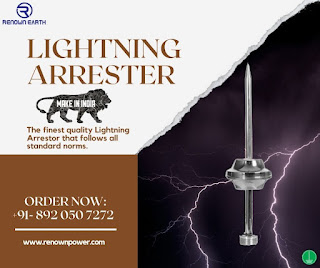Top 10 myths debunked of lightning precaution/safety measures.
Lightning is a naturally occurring that causes electrostatic discharge, which occurs when two electrically charged locations, either in the sky or on the ground, quickly neutralize each other, leading to a rapid discharge of megawatts of energy on average.
This discharge may create a wide range of
electromagnetic radiation, from heat caused by rapid electron movement to
dazzling bursts of light waves called black-body radiation.
Lightning lasts for a fraction
of a second. A normal lightning strike contains an intensity of 300M Volts and
a deadly current of 30,000 amps. It has the capability of heating the
surrounding air to temperatures five times greater than those observed on the
sun's surface.
It is recommended to seek
shelter in a home, other structure, or a hard-topped, completely enclosed
vehicle during a thunderstorm. However, because one of these solutions may not
be accessible to you, understanding the difference between such lightning myths
and reality may be critical to your safety and well-being.
· Only
the tallest structures got struck by lightning.
Lightning is indiscriminate, and it may strike
you wherever you are. Lightning may strike the ground rather than a tree,
automobiles rather than neighboring telegraph poles, and car parks rather than
buildings.
·
Lightning
never hit the same spot twice.
Lightning frequently strikes the same location
several times, especially if the object is tall, sharp, and solitary. Because
it gets hit roughly 25 times each year and has been called up to a dozen times
throughout a single storm, the Empire State Building had previously used it as
a lightning laboratory.
·
You're
safe if you don't see any rain or clouds.
Lightning frequently hits over 3 miles out from
the storm beyond the rainfall or even the big storm cloud. Though rare,
lightning strikes have been recorded to hit regions as far away as 10 miles
beyond their thunderstorm sources, where the sky seems clear.
· If
you're trapped in a rainstorm, being beneath a tree is preferable to not having
any cover at all.
Taking refuge behind a tree is the worst thing
one can do. If lightning strikes the tree, there is a possibility that a
grounding charge may radiate out from it in all directions. The second-largest
cause of lightning deaths is being under a tree.
·
If
you're trapped outside during a storm, lay down on the ground.
Lying down on the ground increases your risk of
electrocution, not decreasing it. Lightning creates potentially lethal
electrical charges all along the ground in all ways lying down, you open up
more possible spots on the body to be struck.
·
The
rubber tires of an automobile will shield you from lightning.
Correct, to be in a car would most likely keep
you safe. Most automobiles, however, are safe because the metal top and sides
redirect lightning away from you-the rubber tires have nothing to do with the
safety. Convertibles, motorbikes, bicycles, open-shelled outdoor leisure
vehicles, and automobiles with plastic or fiberglass shells do not provide any
lightning protection.
·
The
presence of metal on the body attracts lightning.
When it determines where lightning will hit,
the existence of metal makes relatively little impact. The primary determinants
as to whether lightning will hit an item are height, sharp form, and isolation.
When thunderstorms are approaching, meanwhile, contacting or being near metal
items, such as a fence, might be dangerous. If lightning strikes a section of
the fence, even if it is a significant distance away, the metal can carry the
charge and electrocute you.
·
There
is a danger of being electrocuted if one comes into contact with a lightning
victim.
It does not store electricity in the human
body. One could provide first aid to a lightning victim as it is entirely safe
to touch them.
·
Surge
suppressors can safeguard a home from lightning strikes.
Surge arresters are crucial components of a
comprehensive lightning protection system, but they cannot defend a building
from a direct lightning strike. To offer whole-house safety, we must install
these devices in combination with a chemical earthing system.
·
A home
will always protect you from lightning.
Whereas a house is considered the safest place to be during
a hurricane, simply getting inside is insufficient. Any conducting channel
heading outdoors, such as electrical equipment, wiring, plumbing, TV cables,
metal doors, or metal window frames, must be avoided. Don't watch the lightning
from a window. An interior room is normally safe, but the safest refuge
possible is a home outfitted with a properly built lightning protection system.
The Lightning Arrester is a device that helps protect against lightning
strikes. It provides a low impedance channel for the current to follow to the
ground. It has a strong core ion-producing mechanism that generates ions with
no external power supply. It transfers light using the Corona Discharge
principle
Thus, establishing an Earthing
system is a must in India to protect appliances and people from the defective
current. Most good earthing system kits survive for up to a decade with minimal
maintenance.
Our industry-leading Earthing
Solutions, Renown Earth is known as being the best Earthing manufacturer,
servicing consumers with zeal. Above all, you may reach us by email or phone.
Our staff will do all possible to bring greatness to your doorstep at
reasonable prices.




Comments
Post a Comment